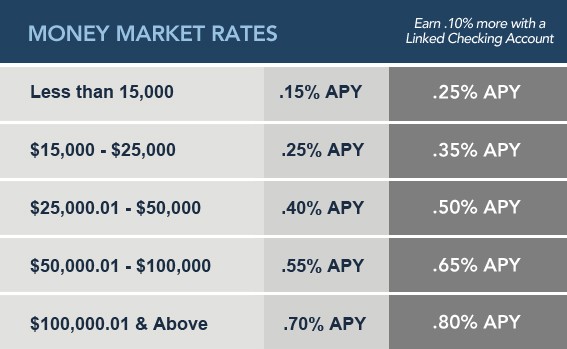Money Market Accounts
Post on: 30 Март, 2015 No Comment

The term money market account is one that many of us have heard, but when pressed to define its meaning, a majority of people will scratch their heads. So what exactly is a money market account? A savings account? An investment vehicle? The answer is…both.
Offered by banks and credit unions, money market accounts have many of the characteristics of a traditional savings account, but also add a safe, conservative element of investment. The money you deposit in this type of account is usually invested in short-term, fixed-income securities, such as U.S. Treasuries.
Money market accounts often require a larger initial deposit to open, and may require that the account balance be maintained at a certain level. In return, they tend to offer higher interest rates than many savings accounts. Often, the larger your account balance, the higher the interest rate you will earn.
In terms of liquidity, money market accounts fall between a traditional savings account and a certificate of deposit. Unlike CDs, which charge a significant penalty for early withdrawals, you may withdraw your money from a money market account at any time. However, the number of withdrawals allowed per month is typically less than what’s allowed for a traditional savings account.
The chief disadvantage of money market accounts is that they don’t always keep pace with inflation over the long term. For this reason, money market accounts are often opened by customers who are looking for an interim place to park a large sum of money while deciding where to ultimately invest it. These enhanced savings accounts offered by banks and credit unions are considered among the safest investment vehicles.
Types of Money Market Accounts
There are two types of money market accounts – deposit accounts (MMDA) and mutual funds (MMMF).
Both types of money market account share many characteristics, including: easy access to your money; invested in very safe holdings; higher rates of return than regular savings accounts; check-writing and money-transferring privileges; and minimum balance amounts are usually required.
However, there are a few key differences:
- Like regular checking and savings accounts, MMDAs are guaranteed by the government, either through the Federal Deposit Insurance Corporation (FDIC) for banks, or the National Credit Union Administration (NCUA) for credit unions.
- Although considered very safe investments, MMMFs are not FDIC insured; so there is a slight risk that if their value dips you could lose money. (This has never happened, although during the 2008 financial crisis, the U.S. Treasury did step in and temporarily guarantee that investors in many MMMFs would not lose their original investment value.)
- The slightly higher risk for MMMFs usually translates into higher yield than for MMDAs.
- Because MMMFs are managed funds, a small fee (expense ratio) is charged. It is typically built into the advertised yield.
- MMMFs can be taxable or tax-free. Taxable funds usually pay a higher yield, but may not always be the better deal, when income taxes are taken into account.
Money market accounts may never generate a lot of buzz, but they can be a good alternative to traditional savings and do serve a need, offering some diversify and a way to spread risk across a portfolio – as well as a convenient, relatively safe place to store assets while considering other options.














